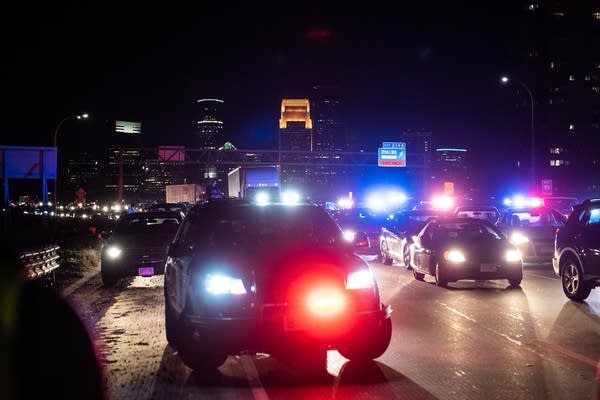Gulf builds in MN Legislature over public safety plans

Go Deeper.
Create an account or log in to save stories.
Like this?
Thanks for liking this story! We have added it to a list of your favorite stories.
When Minnesota lawmakers approved new police oversight laws a couple of months after George Floyd’s death, some vowed to go even further in changing law enforcement culture and accountability in this year’s session.
A House public safety budget bill would usher in additional requirements around law enforcement training, misconduct reporting, handling of body camera footage and limitations in justified use of force.
“New times require new approaches,” said House Public Safety Committee Chair Carlos Mariani, DFL-St. Paul. “That’s what we have constantly heard from Minnesotans and that’s what this bill intends to do.”
But the plan could be little more than a wish list for change given that most of the items are absent from a competing public safety plan working its way through the Republican-controlled state Senate.
Turn Up Your Support
MPR News helps you turn down the noise and build shared understanding. Turn up your support for this public resource and keep trusted journalism accessible to all.
Rep. Samantha Vang, DFL-Brooklyn Center, said doing nothing would be unacceptable.
“We are at a point of reckoning where the entire world is watching Minnesota,” she said.
Law enforcement groups have lined up against core pieces of the latest push in the House bill.
“We believe they are detrimental to public safety in our state and damage the credibility and integrity of the law enforcement investigative process and jeopardize justice being served,” said Brian Peters, executive director of the Minnesota Police and Peace Officers Association, in a letter to Mariani’s committee this week.
Two other police groups struck a similar tone in a joint message to the panel after the bill was released. But the leaders of the Minnesota Chiefs of Police Association and Minnesota Sheriffs Association didn’t close the door to some adjustments.
“In the end, we want to improve trust between citizens and law enforcement, decrease the number of deadly encounters with peace officers, fund important public safety needs of agencies across the state, and ensure our officers in Minnesota are some of the best-trained in the country,” wrote Jeff Potts of the police chiefs group and Bill Hutton on behalf of the sheriffs.
Republicans have gone further in saying the measures serve to vilify police. Rep. Brian Johnson, R-Cambridge, accused DFLers of “pushing an anti-law enforcement agenda while reducing consequences for criminals.”
Some of the proposals are attached to the budget debate because they would hinge on more funding. For instance, there is $12 million for a new “Philando Castile Memorial Training Fund” — named for a Black man killed during a police traffic stop in 2016 — concentrated on crisis intervention and de-escalation tactics.
The bill has $1.5 million for a new Minnesota Heals Program, of which $500,000 could go for burial costs, cultural ceremonies and trauma services for families whose relatives die in officer-involved incidents.
“Our state has a lot of healing to do,” said Rep. Heather Edelson, DFL-Edina.
Rep. Paul Novotny, R-Elk River, tried unsuccessfully to delete the family expense provision from the bill.
“If it is an unjustified use of force, there will be financial reparations to the family. That’s been well established,” he said. “The last thing you want to do is to encourage people who are in a situation that you can’t understand that their answer is the state will pay for their funeral.”
Other provisions are notable for the policy changes, including new restrictions and reporting requirements for no-knock warrants, extra regulations regarding confidential informants and new rules that give families access to body camera footage soon after a deadly police encounter.
Another clause would bar peace officers from aligning with white supremacist or extremist groups. The Senate Judiciary Committee defeated an amendment to its budget bill that had a similar aim.
The House bill also elevates the use of deadly force standard within Minnesota jails and prisons, barring chokeholds or prone restraints in most instances. Those limits were applied to police officers as part of the new law approved in July.
Despite the differences in changes over policing policy, there are some areas of consensus.
Both bills would close loopholes that have made sexual assault prosecutions more difficult. One part would address a recent Minnesota Supreme Court ruling that overturned a man’s rape conviction because his victim didn’t meet the legal definition of being mentally incapacitated because she had chosen to drink and use a narcotic.
The House and Senate public safety bills will be put to floor votes within the next two weeks. After that, negotiators will meet to try to find agreement on a single bill to send to Gov. Tim Walz.


